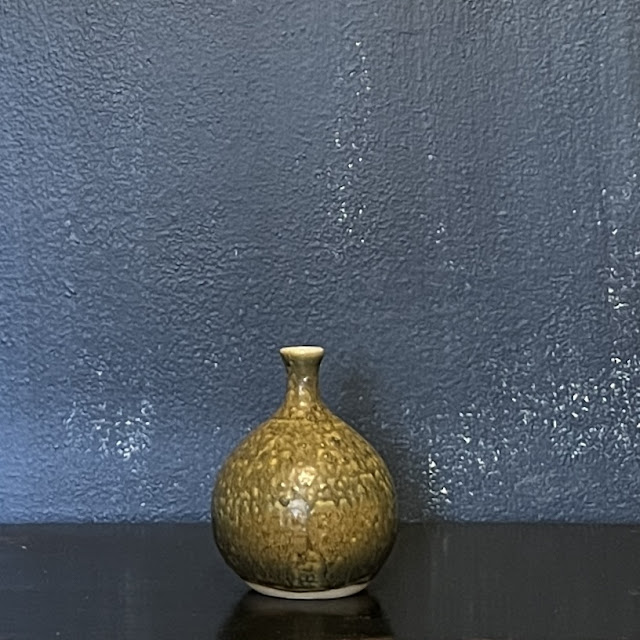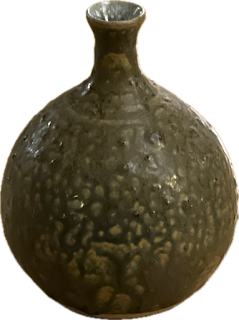No such thing!
I really enjoyed my Teapot Class that I took at the Midwest Clay Project in Madison WI and I learned a ton!
This was my first attempt. The body warped slightly so the lid is not a great fit and the pot weighs a ton! Otherwise, pretty perfect. I love the kooky looking spout, she's generous! The glaze really classes it up.
As I made this, I pictured her as a flawed but perfect grandma: She's big and soft, wears floral house dresses and slippers during the day and smells like cigarettes, but she lets you watch Cartoon Network all day and she always has those individual cups of vanilla fudge ripple ice cream that come with little wooden spoons that she bought just for you and you just know she loves you fiercely so she's all good.
(PS - neither of my grandmother were like this, I think they'd want you to know that).
Don't tell the others, but I think this one is my favorite. The lid doesn't fit well but I LOVE the glazes and I think it's a stylish pot. Although I don't have a story for this one...sorry. My brain tends to come up with stories when I'm doing something with my hands but it can't be counted on.

Here's pot three. Do you recognize her? It's
Mrs. Potts. from Beauty and the Beast! That is, it's Mrs. Potts if you haven't looked at a picture of her in decades. I just realized that when I went looking for a link for reference. I didn't make her on purpose, it just happened (I think it's the hat, er, lid) so I glazed her in pink. I actually don't really like the way the glaze worked, it's kinda whiter where it's thin. I wanted a more solid pink, like how you know who looks in my imagination.
I made this one just to try out this ginger jar lid. It's...fine. I like the glaze but I made it look weird around the opening. I'm not going to show you, you'll just have to take my word for it.
This is the last one. Don't you love it? You love it! I love it!
It's a rat-ephant in a beret!
The story: He's always wanted to go to France; he never has but pretends that he has. It's OBVIOUS but no one ever calls him on it. He's a little insecure and quite vulnerable, you can't help but feel for him.
But so frickin' cute! I used extra spouts that I made just on case for his front legs. I was originally going to give him a regular tea pot foot but once I put those ears on him, he came to life.
This was my inspiration, believe it or not. He took a turn.
One last piece of trivia, which I didn't know. When you made the spouts, they look straight but they have been spun around a lot on the wheel. But after being fired, they can kind of warp in one direction. People with more wheel experience can probably correct for that (I assume). I think it's fun. Some of my spout's issues may be that I put them on a little cockeyed-ly but they look a little like their noses are out of joint.
I learned so much and I will have more pots to share very soon!
Because there's not such things as too many teapots.



















































